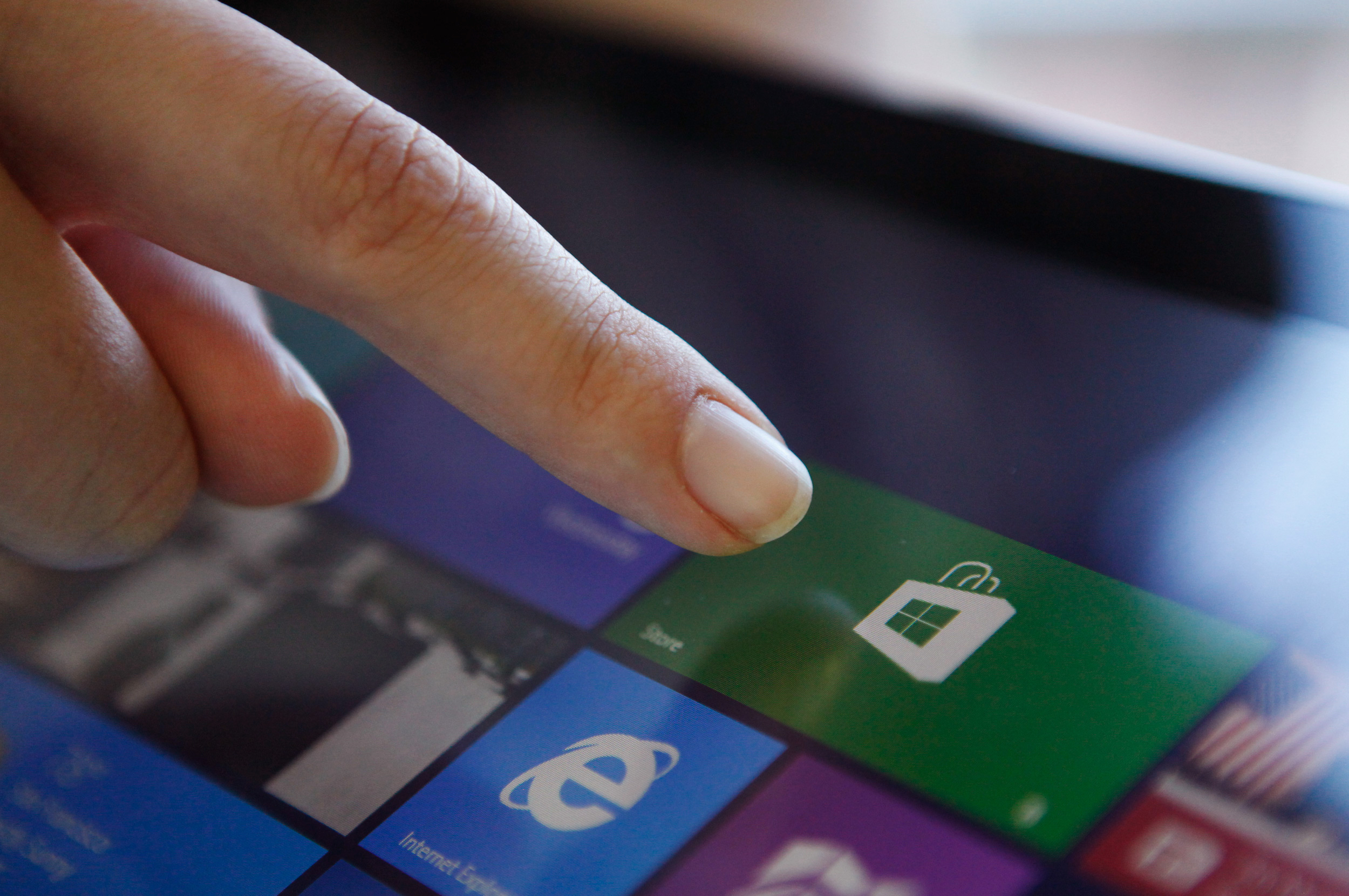Today was the big day for Microsoft: Surface and Windows went live and were both released to the public. So During my lunch break I decided to go to the nearby Curry/PC World to see if I could test both.
Unfortunately the Surface wasn’t available in store. In his place there were many other PCs running Windows 8 so I gave it a try.
Since I wanted to see the difference between a touch experience and a mouse experience I headed first towards an HP all-in-one machine running Windows 8.
I have to admit that the new OS feels good. I had previous experience with Windows 8 when I tried virtualized on my Mac (the first Developer Preview). When you touch it, it’s a completely new and rewarding experience.
The HP machine was fast and the main gestures are immediately very intuitive, except the one for the multitasking bar. Swipe from the right to reveal the status bar: it has a Start button, a share option and a quick access to the main option panel. When you are inside an app if you swipe from the top it opens up a contextual menu (in IE it shows all the open tabs for example). Swipe from the bottom to reveal an input menu (again in IE it shows the address bar).
Then there’s the swipe from left. If you simply drag your finger from the left bezel into the screen you can pull the latest used app in. By doing this you can also set a secondary app so that you can have two apps running side by side at the same time. If you want to see all the open apps to switch between them you need to swipe from left-to-right and then from right-to-left without releasing your finger from the screen. Even if this last one it’s a little bit trickier, I fully mastered and remembered in a matter of minutes.
Unfortunately all the machines in store were not connected to the internet 1, so I couldn’t really test the main features like the Store, the xbox music and video store or simply the responsiveness of the browser.
Again, after just a few minutes of testing, I can say that the Metro UI is really nice and very promising. Microsoft did really a great job.
Then it was time to dive into Desktop mode. A real nightmare.
Using a touchscreen device in Desktop mode it’s really bad. Other than an objective difficulty of reaching buttons and scrolling through files, I think the main problem is at a psychological level. The user always starts from the Metro UI, where all the tiles and icons are big and easily manageable. You can reach every option and the buttons are clearly identified. When you switch to the desktop mode, your finger is the pointer and it’s clearly impossible to manage this mode with a sufficient level of precision, leaving the user in a state of panic.
The Desktop mode is clearly designed for a keyboard-&-mouse use as a traditional Windows 7 and earlier machines. By mixing the two environments together you place the user in a very difficult position. On a machine like the HP I’ve tried you still get a keyboard and a mouse bundled but the Surface should be free from this hassle. By having the legacy Desktop embedded you oblige every user to stick to the old paradigm, potentially stopping part of the innovation.
Then things got even worse. I moved away from the HP machine and I went to test a Toshiba laptop. Oh my god. On that machine (just released, especially for the new OS), Windows 8 was extremely slow. The same apps took forever to launch and even when they showed up it still took a while before they became fully responsive.
The other downside of a non-touch machine is that using the Metro UI won’t feel as good as on the touch experience. Moving around with keyboard is not immediate and it was even trickier to figure out how to obtain the same results as with the four main gestures of the touch version.
Of course on that setup the Desktop environment feels much better and more natural and the system was in general more responsive.
To summarize I can say that Windows 8 in the right environment could really be a game changer and on the touch screen it’s nice to play with. I still don’t understand the reason for having the legacy Desktop. In my opinion they should have done a complete switch, maintaining the development of Windows 7 along side and reserved to business.
These are just the results of a very quick and non-scientific test, so I can’t say a final word.
Have any of you tried the new Surface or Windows 8? Let’s discuss it on Twitter or AND.
-
They had also two Chromebooks in store but they were too without a connection. I still don’t understand why.
To be fair, the only machines connected were all the Macs and iPads. Funny. ↩

